
|
Lorna Mills and Sally McKay
Digital Media Tree this blog's archive OVVLvverk Lorna Mills: Artworks / Persona Volare / contact Sally McKay: GIFS / cv and contact |
View current page
...more recent posts
new work by Lorna Mills curated by Cheryl Sourkes
at akau inc. 1186 Queen Street West, Toronto, Canada
April 13, 2007 - June 9, 2007
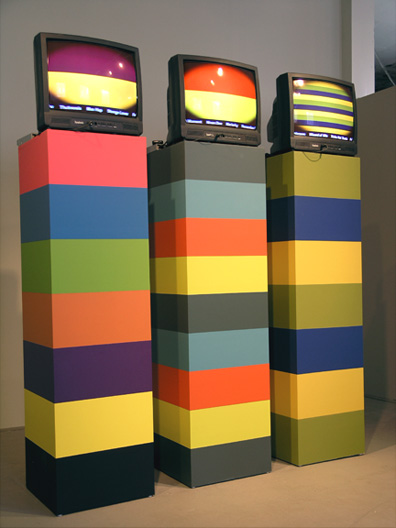
L to R Bletchingly, Infomint, Lucky Hubble 2007 MFD, latex paint, video
Last night Derreck Roemer and Neil Graham's documentary, Last Call at the Gladstone Hotel, was on TVO. Has anyone else seen it? SPOILERS ALERT. I found it pretty gripping and pretty upsetting. Christina Zeidler, local artist and the hotel's manager (and a woman I've known since she was a kick-ass young sprite doing Petzine and the brilliant "Domestication is Resignation" animal stickers with her pals), gave amazing interviews, very honest and sometimes hard to watch.
Anyone who's been around the Queen West scene for awhile is probably going to feel implicated. The crux of the story is the transition of a flop-house and neighbourhood watering hole staffed by working class women, into a hopping boutique hotel and city-wide art venue. The development started when the place was sold to a partnership, the Tippins and the Zeidlers. The Tippins seemed to be pretty uninterested in the welfare of the residents, focussed on preserving the building as a piece of heritage architecture. The Zeidlers, who eventually took over full ownership, had a much more ambitious plan, which was to keep the residents and bring in artists and art audiences, slowly renovating and maintaining a space where these two classes could co-exist.
But it turned out that the building was in such bad repair that slow renovation was not an option. Also, members of the staff were not really comfortable with the increasing art crowd.
Eventually, Christina Zeidler had to implement the very hard decision to relocate the residents. The Zeidlers worked to make the transition as easy as possible, helping financially, and helping secure new places to live. Meanwhile the bars and stages downstairs were filling up with young and beautiful art people. (Not being particularly young nor beautiful, I am nonetheless part of that crowd.)
Roemer and Graham give us intimate profiles of one of the residents, and one of the staff members. The resident is Marianne, a frail but charismatic hoarder who is eventually forced to leave (I don't know by whom) because roaches are running through all her stuff. In a series of heart-breaking scenes she packs her overwhelming things into garbage bags and piles as much as she can into a taxi while the filmakers try to help.
The staff member is Marilyn, a chamber maid who's been there for many many years and cares a lot about the residents, to the extent that she buys sheets and curtains and art for the rooms at yard sales, out of her own pocket. Throughout the film we see her losing faith in the place, which is physically falling apart. Eventually, crying, she tells the camera that she's planning to retire.
I admire Christina for her ideals, and for the courage she showed in facing her role when she had to let some of those ideals go. But the whole thing is super sad. Christina spoke passionately about how the former residents are "remembered" at the Gladstone. It's hard not to see their shadowy former presence as a kind of value-added feature for the artists who have taken over, much like the shadowy former presence of artists is a selling point for condos sold as genuine "artists lofts." (And much like the residents' actual presence in bar was a draw in the early days. You know the way that artists tends to gravitate towards a really great "seedy" bar full of "neighbourhood characters".)
I don't know who rents rooms at the Gladstone now. Do poor people still stay there? Are there any long-term residents? The rates before the transition were cheap for hotels, but high compared to rent (Marianne was paying $1500 a month for a single room!). Would it be financially possible to keep the rooms open to poor folk and the bars open to artists? I'm very curious.
Even if it was possible to balance the books, however, I supsect that the ongoing grinding demands of working with poverty on a daily basis are not terribly compatible with the work of running a successful culture destination. I wouldn't be able to do it. The Zeidlers are ethical and committed and honest about the issues they face. They also partake in an activist role in urban development issues beyond their own buildings. I really admire them for all of that. And it's partly because of their honesty that Roemer and Graham are able to show us the heart-breaking damned-if-you-do, damned-if-you-don't aspects of the Gladstone story. That's better than burying it!
Note: I knew that Leah Sandals, an art n' politics writer whom I admire, had some good strong opinions on this doc, and so I intentionally wrote this before I read her review. It's here.
There is another review of the film here by S. James Wegg.
Both of the above reviewers cut the Zeidlers less slack than I do. I can't extricate myself enough to condem the power politics of the situation with such clarity. But I very much appreciate both writers' points of view.
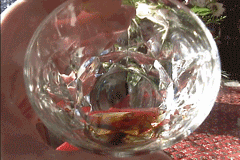
Jennifer McMackon: Now and Next Minute Curated by Christopher Brayshaw
CSA Space, #5 - 2414 Main Street, Vancouver, B.C., May 5 to June 3
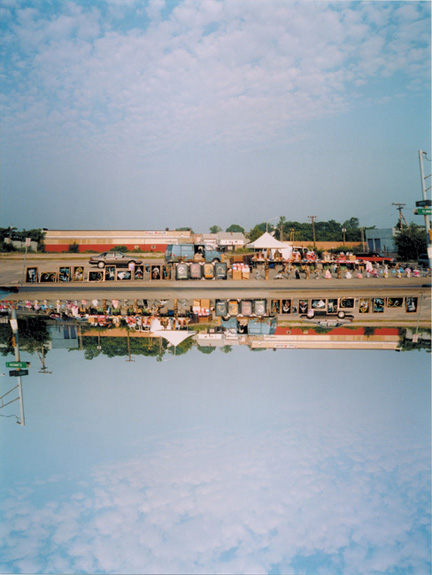
Venice Rose 2003 Now and Next Minute Upside Down Reversal Photograph
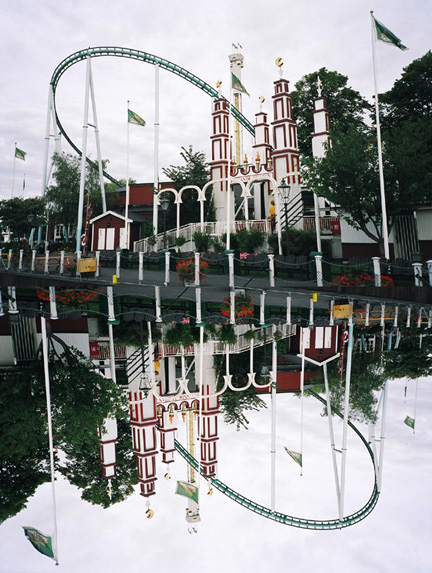
Fairy Castle 2004 Now and Next Minute Upside Down Reversal Photograph,
Monica Tap: Sťance at Margaret Thatcher Projects, 511 W. 25th street Suite 404,
New York, May 10-June 16, 2007, Reception: Thursday, May 10th, 6 - 8 pm
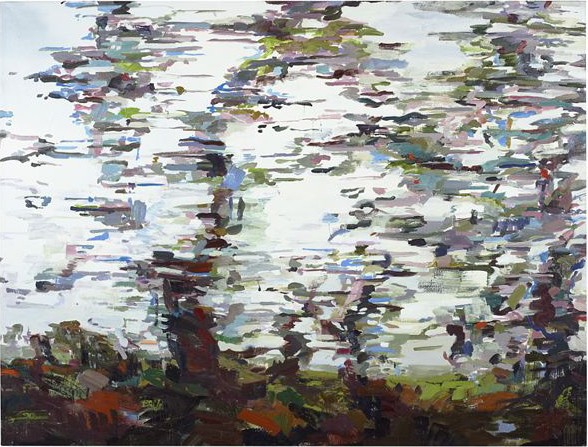
From the Train I 2005 oil on Canvas, 58 x 73 in
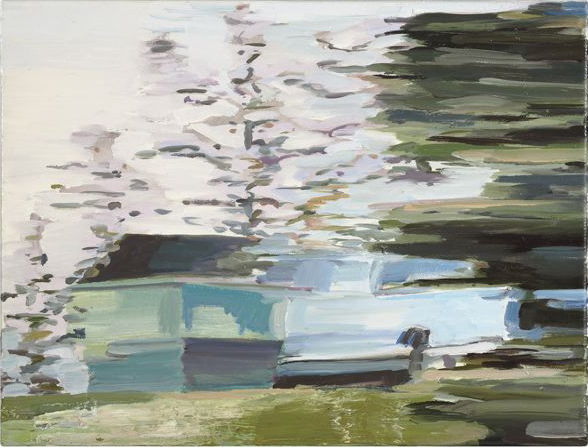
Homer Watson Blvd (pickup) 2007 oil on Canvas, 12 x 16 in
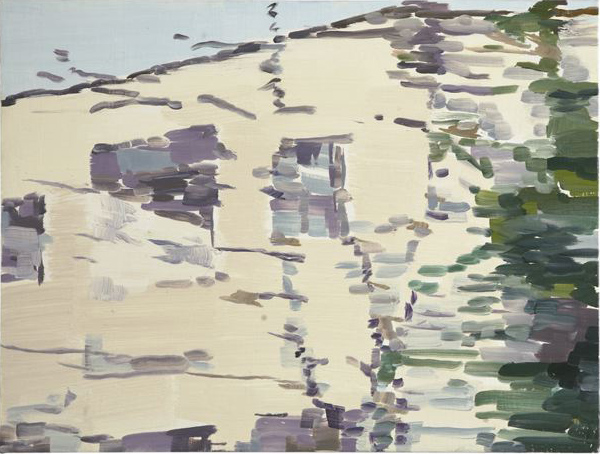
Homer Watson Blvd 2006 oil on Canvas, 12 x 16 in
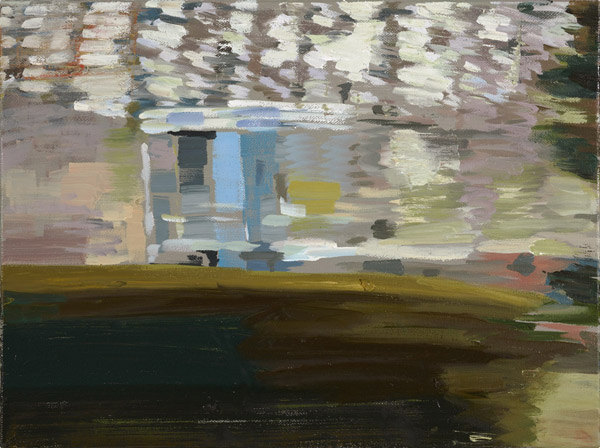
Homer Watson Blvd (phone booth) 2007 oil on Canvas, 12 x 16 in
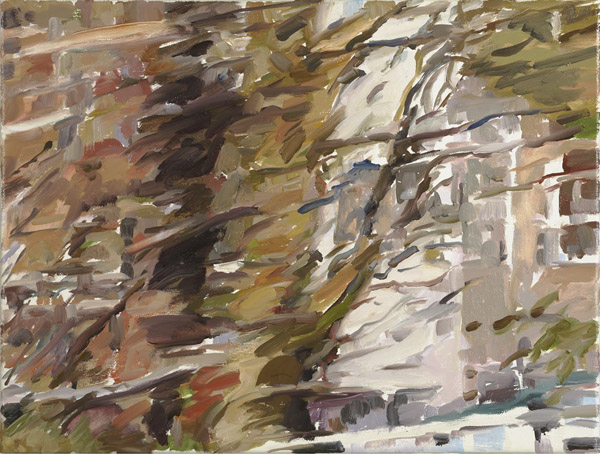
Homer Watson Blvd (flurry) 2007 oil on Canvas, 12 x 16 in
In an earlier comment thread there was some discussion about Re-enchantment, a recent panel at the Art Institute of Chicago on art and religion (with Thierry de Duve, Boris Groys, David Morgan, Kajri Jain, Wendy Doniger, and James Elkins). In the comment thread Matthew Ballou, a faith-motivated artist who "spent a good number of sleepless nights on the ninth floor of that very same building in various states of woe over the issues under consideration by this panel" posted this link to a paper he wrote in response to the event. The paper is interesting, and I felt it was worth a front-page post. I am not a faith-motivated artist, but I very much appreciate the opportunity to hear about the "exclusion of spirituality from academic discussions of modernism and postmodernism" from the perspective of someone who is. Here are two bits that particularly gave me food for thought.
Simply put, the work of art that has the least potential for transgressing the self-conceived autonomy of the viewer is one most able to gain approval. The work that functions more as a sign than as a symbol is far closer to approval, since the sign tends to present itself to the autonomous self for review, whereas the symbol announces itself as avatar of a broader, even universal, conception which bears with it a kind of jurisdiction over the self.There is another response posted here, as well as readings submitted by some of the panelists.
[...]
Why is religio-spiritual content subject to the evaluation of theory and not the other way around? The problem with this arrangement is that theory denigrates practice by the expression of its critique. That is, the form of its existence is a questioning of praxis, hence the eternal strain inherent in the attempt to bridge the theory of a phenomena and the actuality of it. Any analysis of a particular practice, rather than reifying it, particularizes it in a hierarchical structure where the analysis plays the dominant roll of overseeing other. Thus by virtue of its own critical action, the theory of a discrete application becomes the arbiter of the value of that system. This is where the fundamental power of critique comes into existence. A theory of religious or faith-motivated art, then, must be a kind of violence exacted upon that art, for in its attempt to quantify, qualify, name, and place the systems and functions of that art, the theorizing acts as a systolic element that compresses the potentiality of anything it has defined. This is perhaps the fatal flaw of the Re-Enchantment panel: that their words could not seem to traverse the gulf between the disqualifying otherness of critique and the gut-wrenching, heart-felt arena of making artworks. They could not connect with the practice of making contemporary religio-spiritual art in any full measure; most of their time was spent describing it.